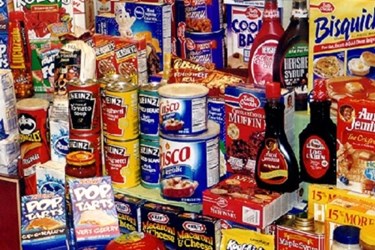3 Considerations For Better Food Packaging

By Sam Lewis

Everyone knows that packaging should protect food products from the dangers of the world. Packaging should also be a key element of enticing consumers to purchase it. Below are a few pieces of advice for creating effective, food-packaging designs
Offers Strong Brand Representation
Packaging is regularly a consumer’s first contact with a food product. The packaging of a product should clearly represent what a brand is all about. The packaging should clearly identify what a product is, give an idea how it is different from others in the market, effectively reach its target audience, and convey the product maker’s company philosophy. All of these aspects should be taken into consideration when designing packaging as they will help establish which materials, colors, sizes, and shapes the packaging should be designed with.
Presents Functionality With Form
Both the function — how packaging protects the product and promotes its safety — and shelf appeal — the aesthetic aspects of a package intended to attract customers — should be well balanced. This means that the packaging must be both alluring and rugged, withstanding the rigors or shipping from factory or warehouse all the way to grocers’ shelves. The label of a product should offer the product’s benefits clearly and concisely while following the FDA’s Food Labeling Guidelines. These rules dictate everything from the functional design of a product, claims that can be made about a product, and the product’s nutritional information.
Asking The Right Questions In Design Phase
Creating packaging that shows off your brand, promotes safety, fully protects the product, and appeals to consumers is no easy task. When designing packaging for food products, ask these questions:
- Which materials will provide the most protection and maximize the shelf life of the product?
- Does the product need a flexible package or rigid container? How much space is needed for brand messages and nutritional information?
- How easily will this product ship to grocers? Is the product’s primary packaging a nuisance for its secondary packaging?
- How much will secondary packaging cost? What will shipping costs be? How long will a grocer warehouse the product before arriving on shelves? How long might it sit on shelves before arriving to the consumer?
- Is essential product information — features, ingredients, nutrition facts, brand identity — easily conveyed by the packaging’s design?
The goal of every food maker is to get products from its place of origin to consumer’s plates as quickly and safely as possible. Truly great packaging can be a significant marketing tool to help drive this factory to fork process. Using the mentioned, and additional, design resources can help create packaging that reaches consumers quickly, safely, and entices them to commit to your brand.
